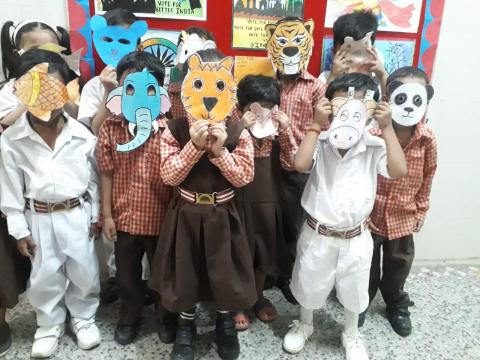
Learning Loss: Reframe the language
"In England test scores at the start of the 2021-22 school year suggest that primary-school kids were almost two months behind where they should be in maths, and one month in reading. Similar research in America found that children were on average between 8-19 weeks behind." (The Economist | July 7, 2022)
This is an excerpt from the news article of The Economist, titled “Covid learning loss has been a global disaster. This is a fantastic report, stating about the loss of learning from various countries of the world.
In this and several other reports, we find a similar language. Learning loss is explained in percentage, ratio, days, months and other quantifying scales. One may argue…What’s the problem, it gives us a precise picture? Visuals such as charts and graphs create the appearance of self-proclaiming truth.
I see a challenge with this language. When we speak of learning as teachers, do we use these terms? Even if we refer, do we believe in it? How many times do we tell our children…Hey, you have made a 3% growth in learning, congratulations! Well, we have numbers and percentages to measure the learning outcome through exams. I agree. But many sensible people believe that numbers cannot capture learning in a holistic sense. We measure only a small segment of what children learn at school. The bombardment of the reports by various agencies on learning loss has made us believe it is a real phenomenon.
I don’t disagree. But I have certain questions.
When we are referring to the loss, what is the base year? hasn’t the state of learning been always in crisis in India? NEP states that approximately 5 crore children cannot read and write grade-appropriate text in India. This is the pre-pandemic figure. ASER has been drawing our attention to this crisis since 2005. Aren’t our government schools in most states in dilapidated conditions before the beginning of the pandemic? It is important not to lose sight of the forest because of a tree. A pandemic should not be used as an excuse for the states to shirk their responsibility to provide high-quality education. People who lost their jobs have no choice but to rely on government schools. It is essential that we continue to question the state's education policies. Pandemic shouldn't be an excuse.
A child who might have begun reading simple text at the age of 5 might learn it at the age of 7 because of the pandemic. It shouldn’t be a big deal. In her book Cleveland, Lucy Crehan discusses and cites research showing that in Finland, children who start formal learning lessons at the age of 7 match or surpass those who start at 3 when they attain the age of 14-15. Experts know that learning growth cannot be seen in linearity.
Look at the term “Learning Loss”! G.N Devy, a famous linguist says, word is world. '' Don't we often use the word “Loss” against “Profit” or “Gain”. People who believe in Loss will eventually believe in profit or gain. Those who believe in 20% learning loss may not hesitate to believe in software or apps that claim to increase learning by 20%. Unconsciously, a large market is being prepared for such mechanical intervention. We have to remain watchful. We have to reiterate… Software and Apps are not more than aids. Learning occurs through the intimate relationship between learner and teacher in the classroom.
Remember...learning involves thinking; it involves becoming sensitive to human values; it involves understanding the process; it involves developing curiosity; it involves critical thinking.
I don’t say that “Loss” isn’t real. It is. But it has to be seen through the lens of intersectionality. For the girls who were compelled to marry because the schools were closed, the loss is real. It’s real for the boys who were forced to enter the labour market. Even among boys and girls, we have to see how it impacts the children from the disadvantaged sections of society. We don’t have much data available on it. I found an interesting report in this context in the EPW “Closure of schools and Migration of Adolescent Tribal Girls”
The pandemic has been a disaster, but we also need to look at what socio-emotional skills children acquired by being with their families. It is my belief that the children in the villages spent enough time in their natural surroundings. Krishna Kumar writes in his book "Children's language and the teacher" that children who are exposed to their natural surroundings are capable of developing better language skills. During this pandemic, children have seen life from close quarters. At school, we must build upon these experiences.
Think about it next time you see "Learning Loss"!
- Log in to post comments
